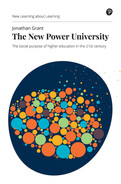Postface
What looks like a crisis today is actually an equivalent opportunity.
John Ralston Saul (2005), p. 295
I was half-way through writing this book when the world was confronted with, in the words of the UN Secretary-General Antonio Guterres, the ‘most challenging crisis we have faced since the Second World War’.385 The COVID-19 pandemic disrupted virtually all aspects of life and mobilised nations globally on a scale not seen since that conflict. A new infectious virus that caused a severe acute respiratory disease, especially in the elderly, killed half a million people and infected over seven million worldwide, within six months of it emerging in the Chinese City of Wuhan in December 2019.386 There was no treatment nor vaccine, meaning that the only intervention available to governments was to ‘lock down’ society – shops were closed, factories mothballed, schools shut and normal university activity suspended. The lockdown prevented the transmission of the disease from person-to-person by restricting their movement and confining people to their homes. As the historian Lawrence Freedman pointed out, it was a truly unprecedented moment with it being ‘unusual to have so many countries, varying in size, demography, socio-economic structures and politics, addressing the same challenge at the same time’.387
Like all sectors, universities have been profoundly impacted by the pandemic. In the short term, they pivoted to a new way of working, with students returning (where possible) home to continue their education online and staff asked to work remotely using video-conferencing technology. Critically, they did not shut. Universities around the world contributed extraordinary efforts to fight the virus – testing existing medicines, developing novel vaccines, creating apps for population health surveillance, building new, easy-to-manufacture ventilators – as well as supporting their local communities through the redeployment of clinical staff, student volunteering, providing food parcels, bridging grants to local small businesses and not-for-profits, and protective ware such as gloves, masks and gowns to community partners.
Despite leaning into the crisis in this way, many universities faced, and continue to face, a short-term existential threat. The business model in Anglo-Saxon universities, where high-margin international students cross-subsidise loss-making activities, such as research and the fulfilment of social responsibilities, has been hugely challenged with a significant anticipated decline in student enrolments. This creates a liquidity crisis for universities that could become a solvency issue if extended over the mid-term (that is the next two to three years). Requests from university leadership for bailouts from government fell on deaf ears. Frankly, this did not surprise me. As we discussed in the early parts of this book, the social contract that gives universities their licence to operate is broken and, in a long queue of special pleading, universities were always going to be near the bottom of the politician’s in-tray.
As I write, university leadership and commentators are, understandably, focused on the near-term horizons to ensure the viability of their institutions into the future. However, decisions that are made today will shape what is possible tomorrow and so it is important to have line of sight to where on the horizon institutions aspire to get to in a Post-COVID (Po-Co) environment. It is almost certainly the case that the demand for universities that can offer high-quality learning and research coupled with committed social responsibility will increase, nationally and internationally. As such, and as noted in the preface, the arguments I put forward for the New Power University are both accelerated and amplified by the COVID-19 pandemic.
In fact, the immediate response to the pandemic illustrates what is possible. Shifts to online learning, the challenge to find a vaccine and the mobilisation of students and staff volunteers are all ideas put forward in earlier chapters. More profoundly, across society, we have, arguably, seen a shift to a new form of collectivism where society has come together in some extraordinary ways that were, frankly, unimaginable a year ago. As Charles Leadbeater put it in a recent pamphlet:
The threat posed by COVID-19 brought about an abrupt change in our priorities, the tone of public discourse and our sense of ourselves. Saving lives and supporting health care workers became the absolute priority rather than making profits. Generosity has become more important than selfishness. Our response has been a collective expression of love combined with power.388
Leadbeater argues that we should learn this profound lesson and apply ‘love + power’ to ‘tackle deeply entrenched and emerging social challenges’. As such, he is building on the work of social movements and notions of new power that have heavily shaped my thinking about the social purpose of the university. Not only is this about a renewed Po-Co understanding of purpose but it is also about a way of working. Leadbeater quotes Martin Luther King in this regard, noting that ‘such work should be long, because it takes time; broad because it reaches out; deep because it is about what matters in life; and tall, because it aims for higher goals’. A perfect note to end this book.
385https://www.un.org/en/un-coronavirus-communications-team/time-science-and-solidarity.
386https://coronavirus.jhu.edu/map.html.
387Freedman (2020), p. 26.
388https://www.tacsi.org.au/wp-content/uploads/2020/06/TACSI_LovePower_Report.pdf.
